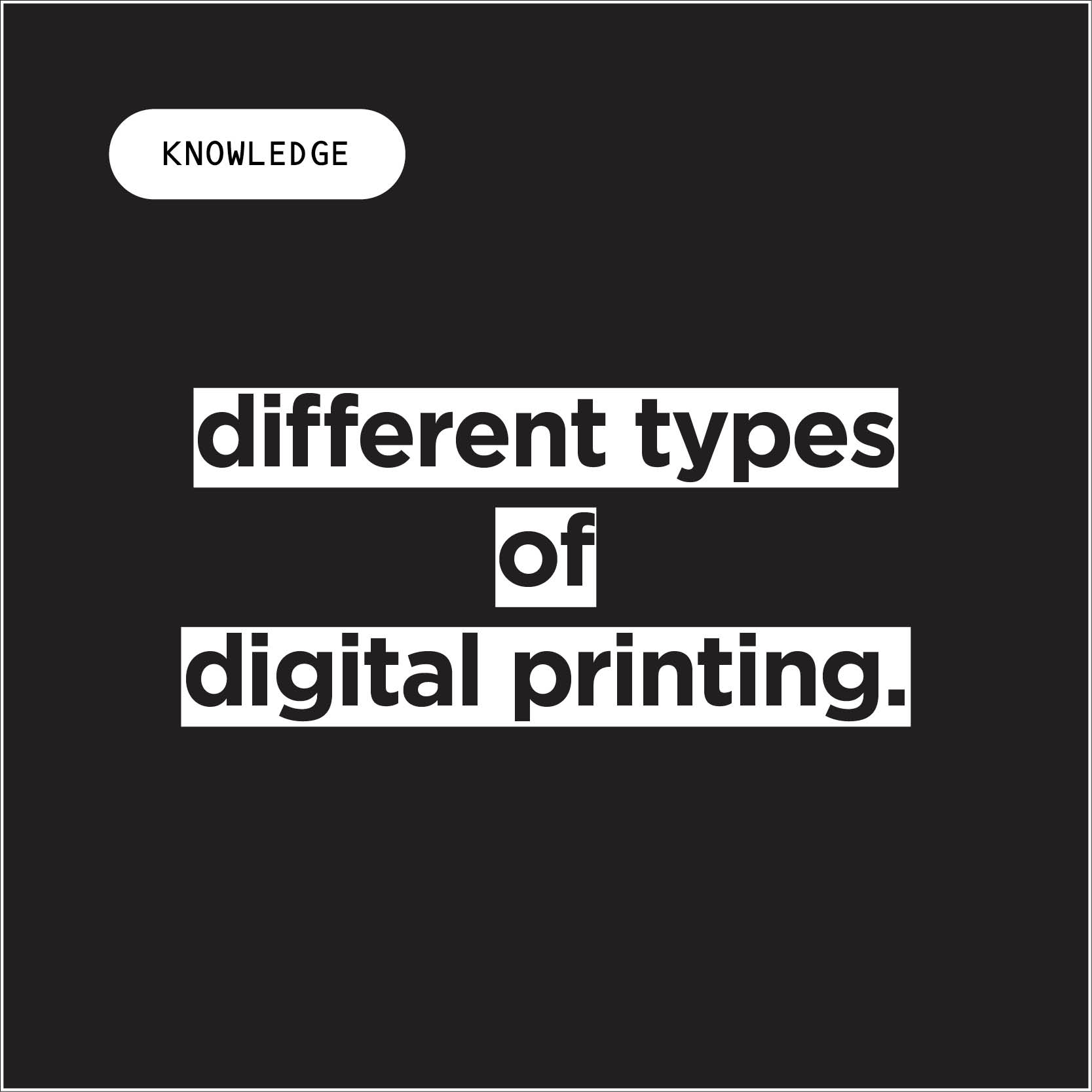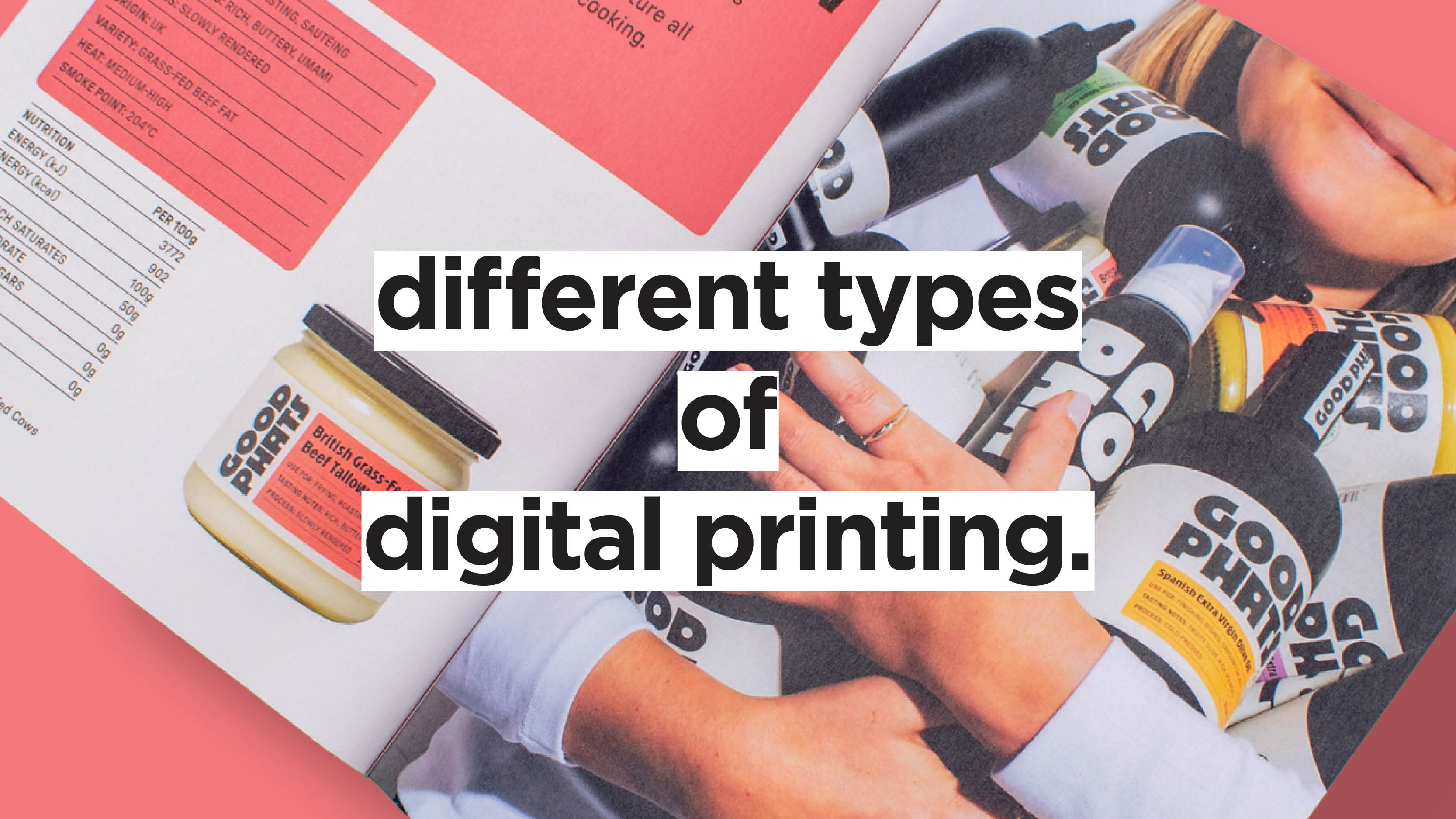
While traditional methods like litho printing are still en vogue, digital printing is, as the name suggests, the printing method of the digital era.
Today’s fast-paced world requires an equally fast, highly customisable, and cost-effective alternative. Thanks to digital printing, fast turnarounds and superior quality are more accessible than ever.
What is digital print?
But what is digital print, exactly?
Simply put, digital printing uses computers and specialised equipment to transfer digital-based images directly onto a variety of surfaces — from paper to ceramic. What makes digital printing unique from traditional printing methods is that it doesn’t require printing plates: this significantly speeds up the printing process while reducing costs.
Advantages of digital print
As we briefly mentioned earlier, digital printing offers many advantages over traditional printing methods. Here’s what makes digital printing so appealing to a variety of customers.
Perfect for small-batch orders
With its low setup costs and fast turnaround times, digital printing is ideal for smaller orders. Since it doesn’t require expensive plates, it’s the best choice for smaller jobs over offset printing.
No drying times lead to faster turnaround
While other printing methods require drying time, digital printing is known for its fast turnaround times. So, if you need last-minute collateral, digital printing is your best bet.
On-demand printing capabilities
Print whatever you need, whenever you need it. Digital printing allows for easy updating of print files, making on-demand printing as easy as pie.
Flexible and versatile
You can digitally print on just about any material! Apparel, ceramic, PVC, and even concrete; the list goes on. If flexibility and versatility are what you’re looking for, digital printing is the way to go.
Variable Data Printing
Variable Data Printing, or VDP, is a digital printing method that allows the customisation of every printed item by changing elements like text, images, and barcodes. It merges a static design template (like a PDF file) with a database of variable information (in CSV or Excel format), seamlessly creating unique printed pieces. VDP is invaluable in fields like direct mail marketing, where high levels of customisation are key to reaching each individual customer.
Types of digital print
If you’re interested in using digital printing for your next project, you should know that not all digital printing methods are created equal.
Each type of digital printing has its advantages and will be better suited to a specific project or printing material depending on the application.
Here are the most common types of digital printing, grouped by use.
Paper / Card Printing
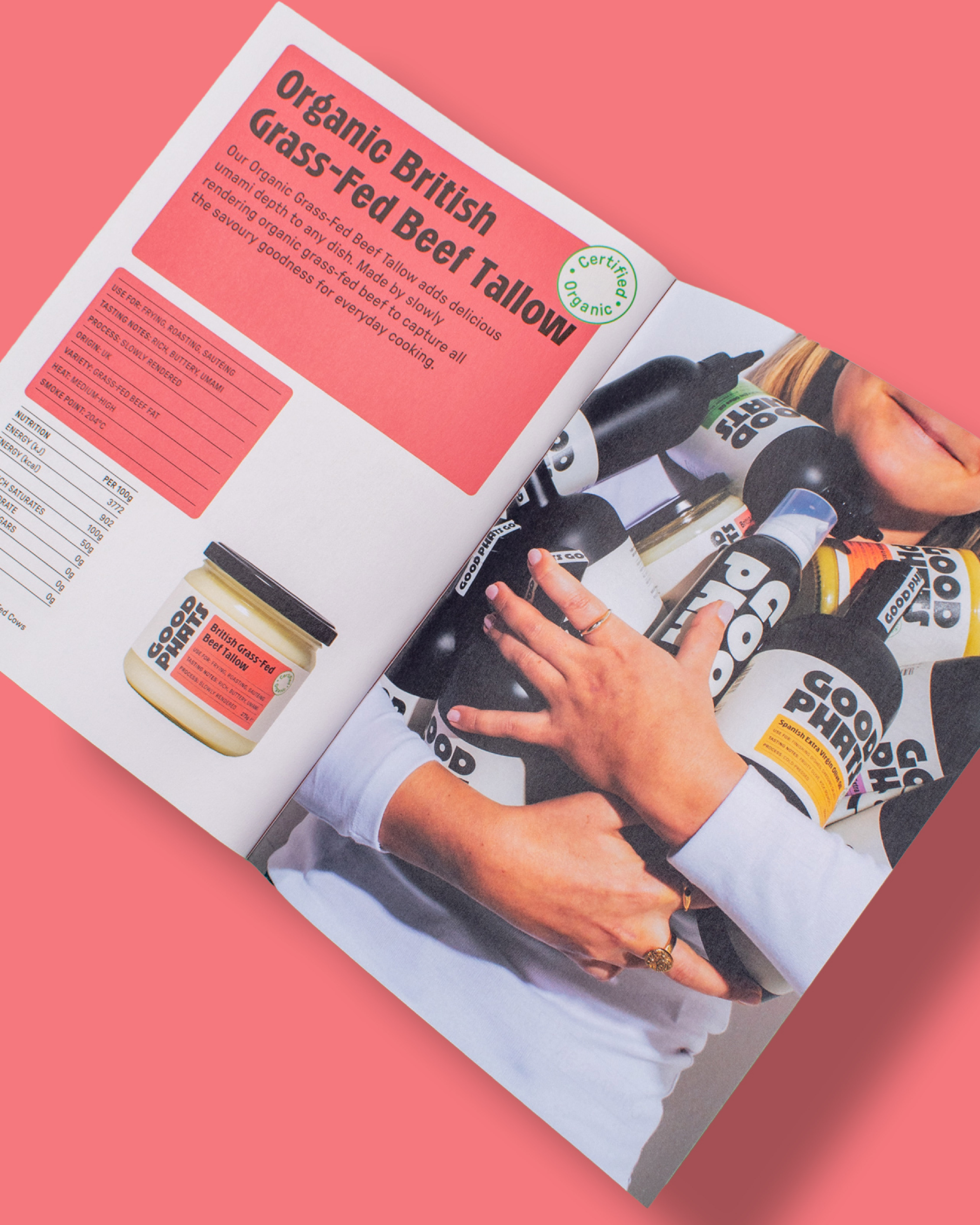
Digital printing can handle any kind of paper and card material, from packaging solutions to fine art prints. Here are the three types of digital print we recommend for paper and card.
Dry Toner
One of the two main digital printing processes, commercial toner-based printing systems are very similar to their office or home-level printer cousins. The main difference (besides the actual size of the machine) is that the former offers more features with higher print quality and faster run speeds. Toner-based printing uses a “dry” toner. This toner is CMYK-based, with some systems offering “special” colours like white, metallics, fluoro shades, and varnish finishes.
Dry toner processes use a fine electrostatically charged coloured powder that is melted onto the paper surface. The result will look different from offset printing, where the liquid ink seeps into the paper.
Wet Toner
Unlike dry toner printing, some printing processes use a “wet” toner. Wet toner processes create results virtually indistinguishable from litho print (known as litho-quality). This is because they use a liquid, rather than powder-like, toner, which is applied onto the paper via a transfer blanket. HP Indigo Digital presses are among the best machines available for wet-toner digital printing.
This wet toner is, just like the dry toner, CMYK-based, and can feature the same special shades and finishing effects.
Inkjet
The other main digital printing process is inkjet. Inkjet printing also shares similarities with the humble desktop printer, as it works by spraying ink directly onto paper through inkjet nozzles, which are, in turn, controlled by digital printing files. For the best results, it’s essential to ensure the printing files are set up correctly. The result will be bright, vivid, and extremely realistic — making inkjet printing perfect for photography, artwork reproduction, and anything requiring sharp, rich detail. Inkjet printers use mixing and layering CMYK colours to produce the entire colour spectrum.
Unlike traditional ink, which simply dries by soaking into porous materials, digital printing often uses inks suitable for a variety of surfaces, which is why it requires a dedicated curing process. The two main types of inkjet curing are UV curing and thermal (latex) curing.
Hybrid
Hybrid digital printing combines the best of both worlds: traditional screen printing and modern digital printing.
Typically, a screen-printed base layer (often a white underbase or special effect) is laid down first, followed by detailed, full-colour digital printing on top. This hybrid approach delivers the vibrancy and tactile quality of screen printing along with the precision, flexibility, and photographic detail of digital printing.
It’s particularly popular for achieving bright, durable prints and for seamlessly delivering complex designs. Hybrid systems are also used in packaging and label production, where digital printing adds customisation and speed while traditional methods ensure consistency and finish quality.
In essence, hybrid printing bridges the gap between craftsmanship and technology — perfect for those who want both durability and design freedom.
Risograph
Risograph or riso printing creates vibrant, multicoloured images using a digital, automated process that is similar to screen printing. This process requires a risograph printer, which looks a lot like a photocopier but works like a screen printer.
Risograph printing has been a popular choice for high-volume projects by institutions like schools and political parties for decades. Lately, it's enjoying a comeback as artists and designers embrace its tactile feel and unique results. Riso printing is ideal for uncoated paper stocks and, generally speaking, all papers with a textured or "naked" surface for better ink absorption. It’s best to avoid coated, glossy, or smooth-surface papers like those made for laser or inkjet printers, which might cause issues.
First, the image is separated into individual colour layers, and a custom stencil (known as "master") is created for each layer using thermal rice paper. These masters are wrapped around matching ink drums, and as the paper moves through, ink is pushed through the tiny holes in each stencil onto the paper. This process is repeated for all colours, with inks overprinted to develop the complete image.
Garment / Merch
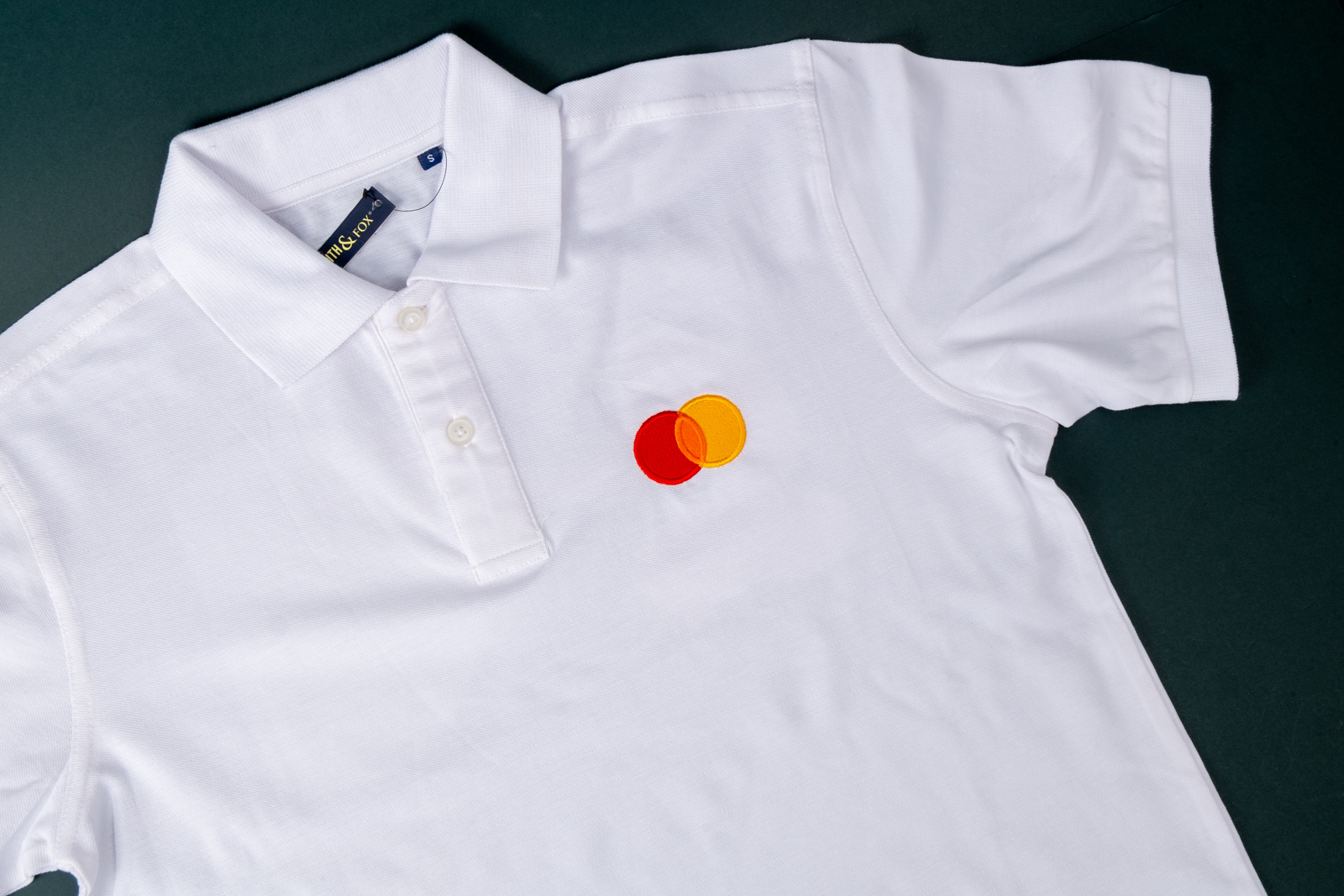
Printing on materials other than paper and canvas? Yes, we can. Thanks to digital printing, anything from aluminium to polyester fabric can be printed on. Here are the types of digital print we recommend for merch and garments.
DTG
Direct To Garment (DTG) printing is a digital process that works much like an inkjet printer — but for clothing.
It sprays specially formulated, water-based textile inks directly onto the pre-treated item (typically cotton or cotton-blend fabrics). The ink soaks into the fabric, creating full-colour, detailed designs and photographic prints without the need for setup screens or plates.
The design is then cured with heat, ensuring the ink is permanently bound to the fabric.
DTG is ideal for short runs, custom orders, and on-demand printing, such as custom graphic T-shirts. The result is a soft feel and vibrant colour, though DTG works best on light-coloured, natural fabrics.
Dye sublimation
Dye sublimation printing uses heat to turn solid dye into a gas that bonds with polyester fibres or specially coated surfaces.
The image is first printed onto transfer paper with sublimation inks, then transferred to the product using heat and pressure.
Because the dye actually becomes part of the material, the result is vibrant, permanent, and won’t crack or fade. This method is perfect for polyester garments, mugs, metal panels, and other coated items. It’s often used for all-over (edge-to-edge) prints and sportswear because it maintains the fabric’s softness and breathability while delivering rich, long-lasting colour.
Transfer printing
Transfer printing is a versatile method where the design is printed — usually via inkjet, laser, or sublimation — onto a special carrier sheet, then heat-pressed onto the garment or substrate.
Heat and pressure transfer the image or ink from the sheet to the surface below. Unlike DTG, the ink isn’t sprayed directly onto the fabric; instead, it’s applied as a film or layer.
This makes transfers great for applying designs onto tricky fabrics or small production runs. There are many types of transfer printing, including vinyl transfers for solid colours, digital transfers for photos, and sublimation transfers for polyester.
Embroidery
You most likely have an item in your closet featuring an embroidered detail or logo, but did you know that the embroidery was created by… a printer?
Digital printing meets embroidery in this two-step process, where a file is first digitised and then stitched by an embroidery machine. Digitising is the crucial software-based step of converting an image into a machine-readable format that contains specific instructions for stitch type, density, and colour.
Though it’s less suited for photo-realistic artwork, embroidery conveys a sense of quality and longevity that printing can’t replicate.
Does this method technically count as printing? We’ll leave that up to you…
Large-Format
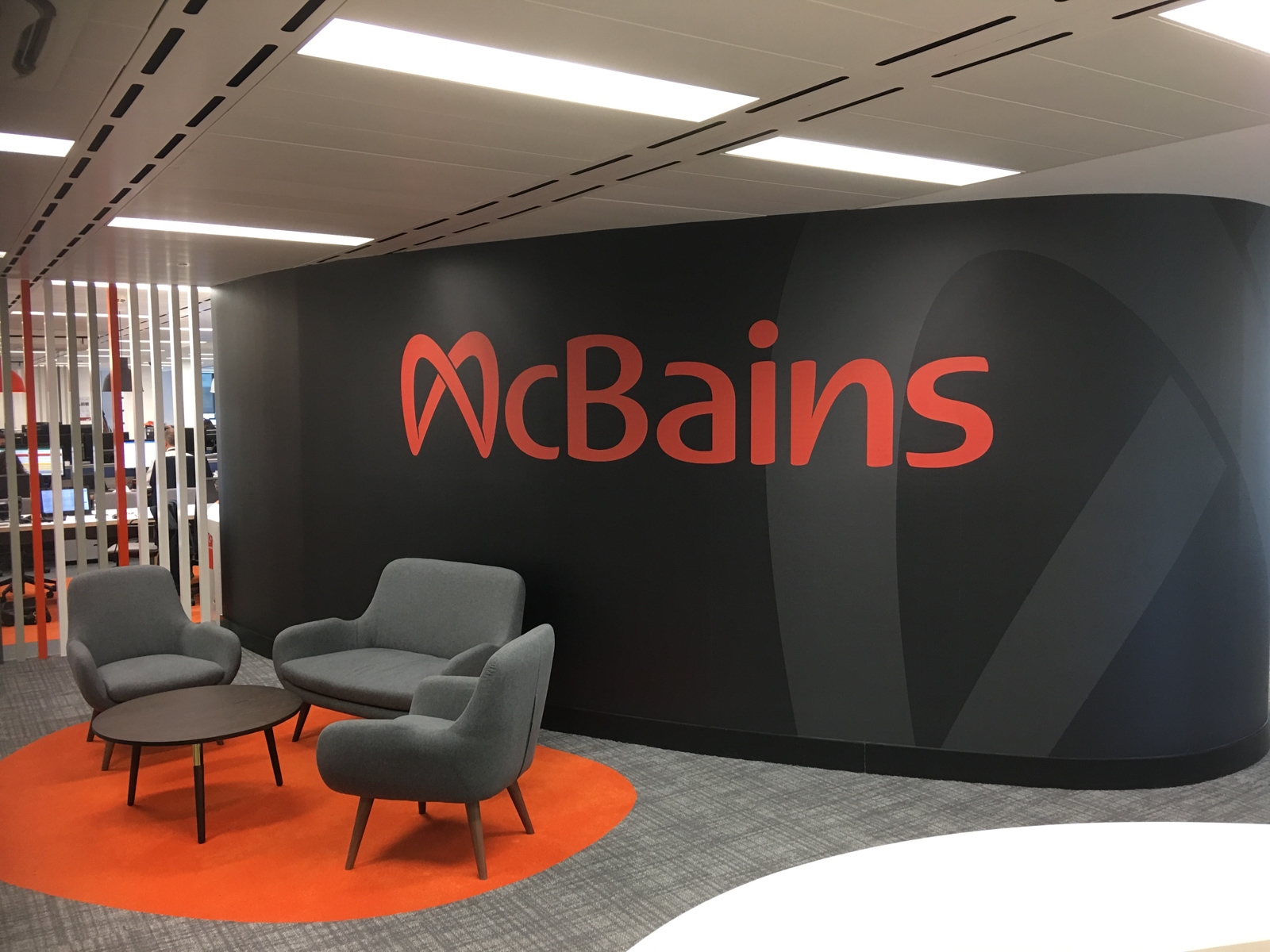
Lastly, what’s the best type of digital print for large-format projects? One above all rises to the top.
Inkjet, but with differing ink types
Large-format digital printing is the go-to method for producing oversized graphics like banners, signage, wall murals, vehicle wraps, and exhibition displays.
At its core, it’s an advanced form of inkjet printing that uses wide-format printers capable of handling large rolls or rigid sheets.
The key difference lies in the inks used: aqueous inks deliver vibrant, detailed images ideal for indoor posters and photographic work; solvent or eco-solvent inks bond to vinyl and other plastics, offering weather resistance for outdoor graphics; and UV-curable inks are instantly hardened by ultraviolet light, allowing printing directly onto rigid materials like wood, glass, or metal with exceptional durability.
Each ink type serves a specific purpose, balancing colour brilliance, longevity, and surface compatibility.
How the digital printing process works
While these digital printing methods differ significantly, the process remains similar. Here are the key steps.
1. File preparation
It begins with a digital file, typically in formats such as PDF or TIFF, which includes the image or text to be printed.
2. Pre-press processing
The digital file is processed through pre-press steps, including colour correction, resolution tuning, and layout refinement to ensure compliance with print standards.
3. RIP (Raster Image Processing)
This process prepares the image for printing by translating it into a language the printer can understand. During RIP, the digital file is converted into bitmap format.
4. Printing
The prepared image is sent to the digital printer. Here, the process varies depending on the type of digital print used. If necessary, the print is cured.
5. Finishing
Finally, the printed material undergoes finishing processes depending on the end product: cutting, binding, laminating...
At Jump, we’re proud to offer these digital printing processes (and much more!). Click here for more or get in touch athello@wearejump.co.uk
